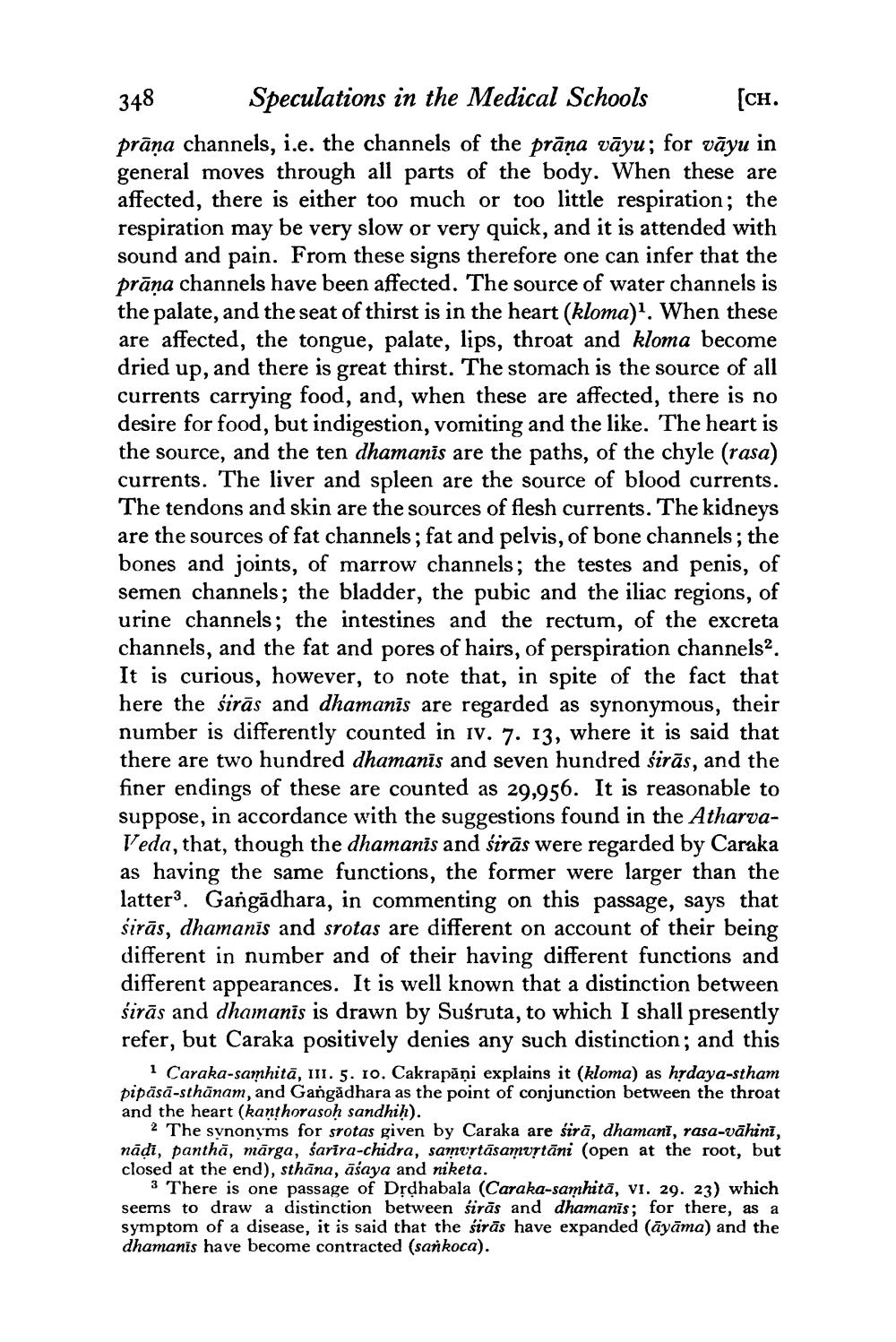________________
348 Speculations in the Medical Schools (CH. prāna channels, i.e. the channels of the prāņa vāyu; for vāyu in general moves through all parts of the body. When these are affected, there is either too much or too little respiration; the respiration may be very slow or very quick, and it is attended with sound and pain. From these signs therefore one can infer that the prāna channels have been affected. The source of water channels is the palate, and the seat of thirst is in the heart (kloma)'. When these are affected, the tongue, palate, lips, throat and kloma become dried up, and there is great thirst. The stomach is the source of all currents carrying food, and, when these are affected, there is no desire for food, but indigestion, vomiting and the like. The heart is the source, and the ten dhamanis are the paths, of the chyle (rasa) currents. The liver and spleen are the source of blood currents. The tendons and skin are the sources of flesh currents. The kidneys are the sources of fat channels; fat and pelvis, of bone channels; the bones and joints, of marrow channels; the testes and penis, of semen channels; the bladder, the pubic and the iliac regions, of urine channels; the intestines and the rectum, of the excreta channels, and the fat and pores of hairs, of perspiration channels?. It is curious, however, to note that, in spite of the fact that here the sirās and dhamanīs are regarded as synonymous, their number is differently counted in iv. 7. 13, where it is said that there are two hundred dhamanis and seven hundred širās, and the finer endings of these are counted as 29,956. It is reasonable to suppose, in accordance with the suggestions found in the AtharvaVeda, that, though the dhamanīs and sirās were regarded by Caraka as having the same functions, the former were larger than the latter3. Gangadhara, in commenting on this passage, says that sirās, dhamanīs and srotas are different on account of their being different in number and of their having different functions and different appearances. It is well known that a distinction between śirās and dhananis is drawn by Suśruta, to which I shall presently refer, but Caraka positively denies any such distinction; and this
1 Caraka-samhitā, 11. 5. 10. Cakrapāņi explains it (kloma) as hrdaya-stham pipāsā-sthānam, and Gangadhara as the point of conjunction between the throat and the heart (kanthorasoh sandhih).
2 The synonyms for srotas given by Caraka are sirā, dhamani, rasa-vāhini, nādi, panthā, mārga, śarīra-chidra, sanurtāsamuştāni (open at the root, but closed at the end), sthāna, āśaya and niketa.
3 There is one passage of Drdhabala (Caraka-samhită, vi. 29. 23) which seems to draw a distinction between sirās and dhamanis; for there, as a symptom of a disease, it is said that the sirās have expanded (āyāma) and the dhamanis have become contracted (sankoca).




